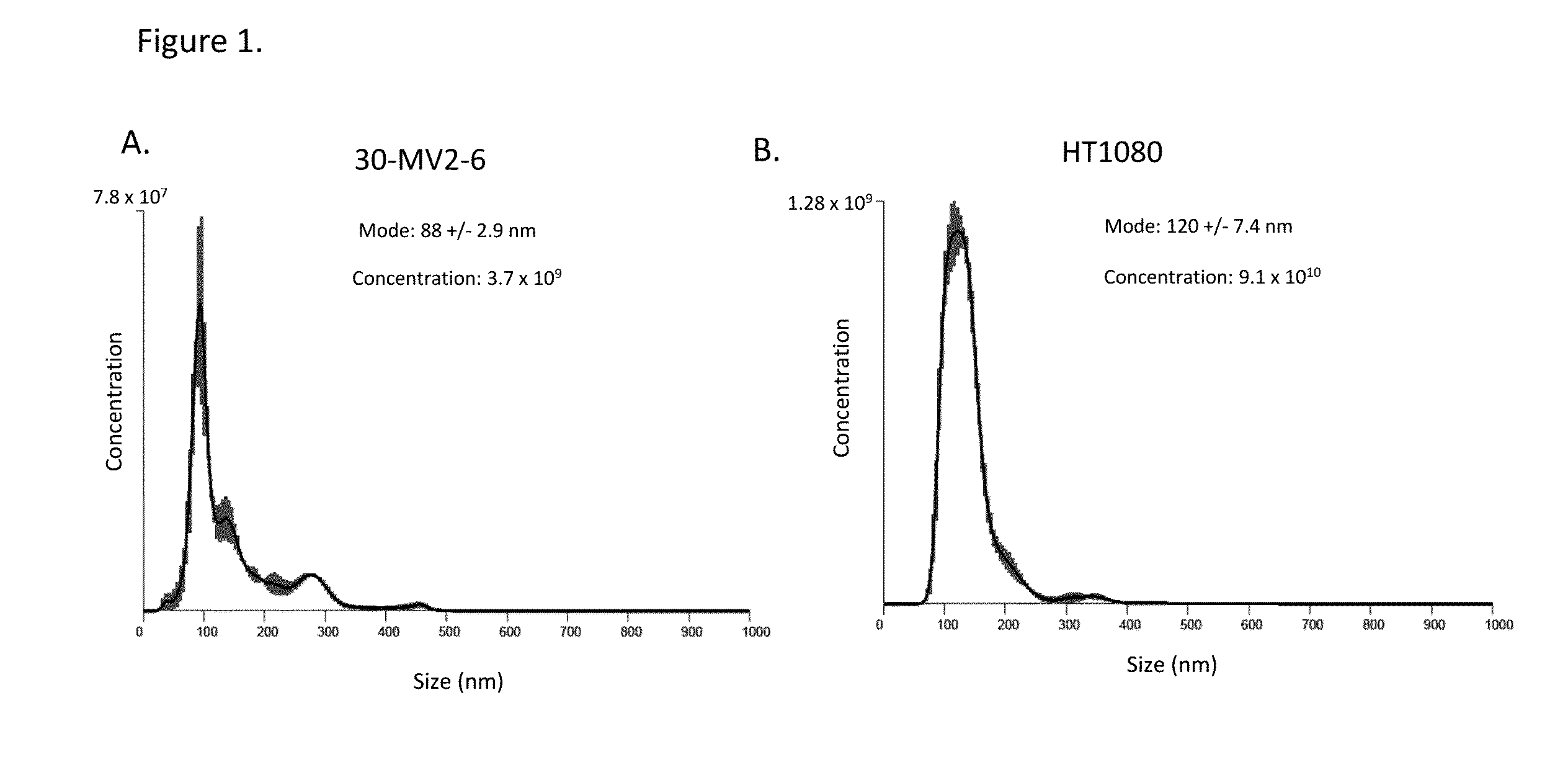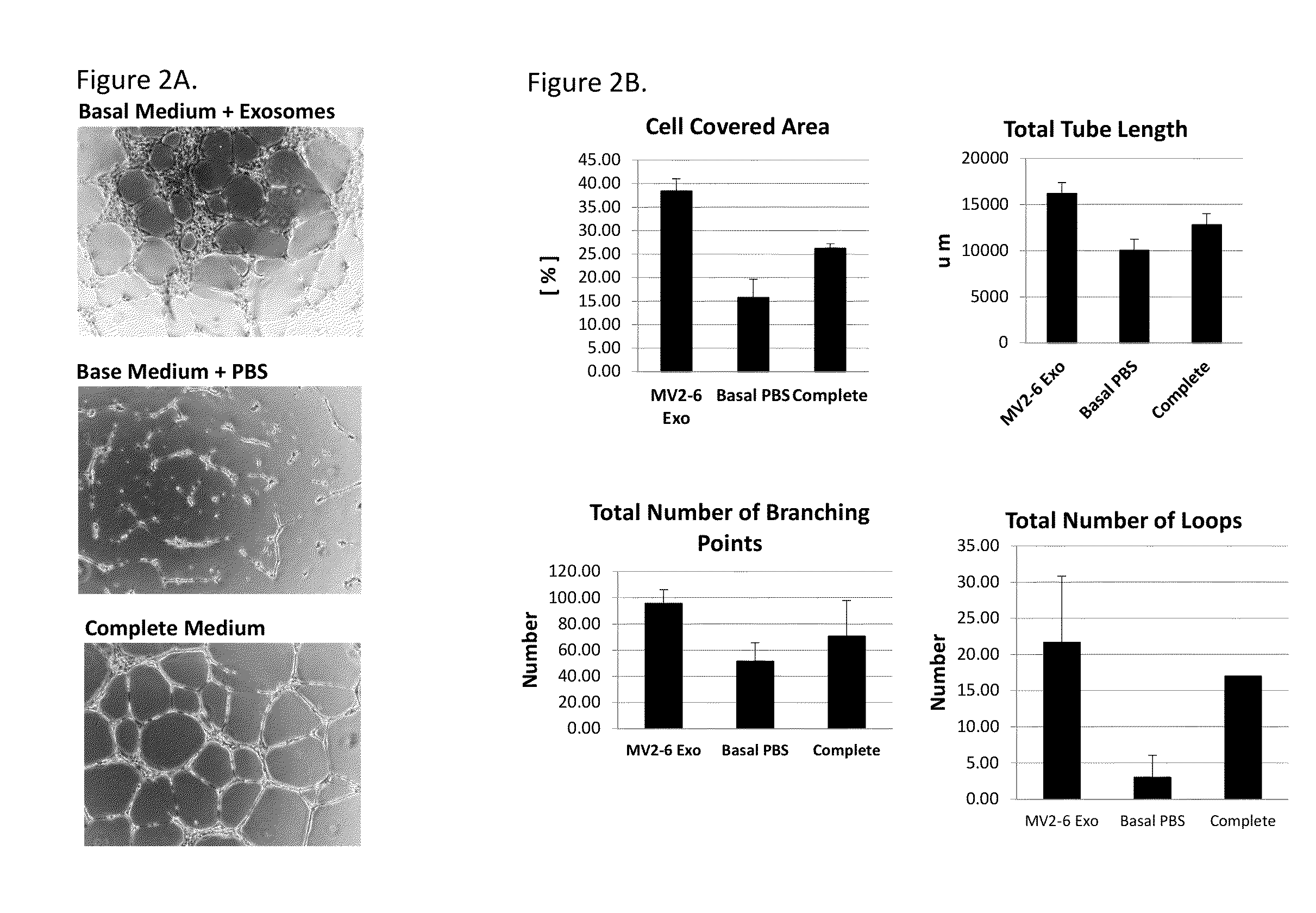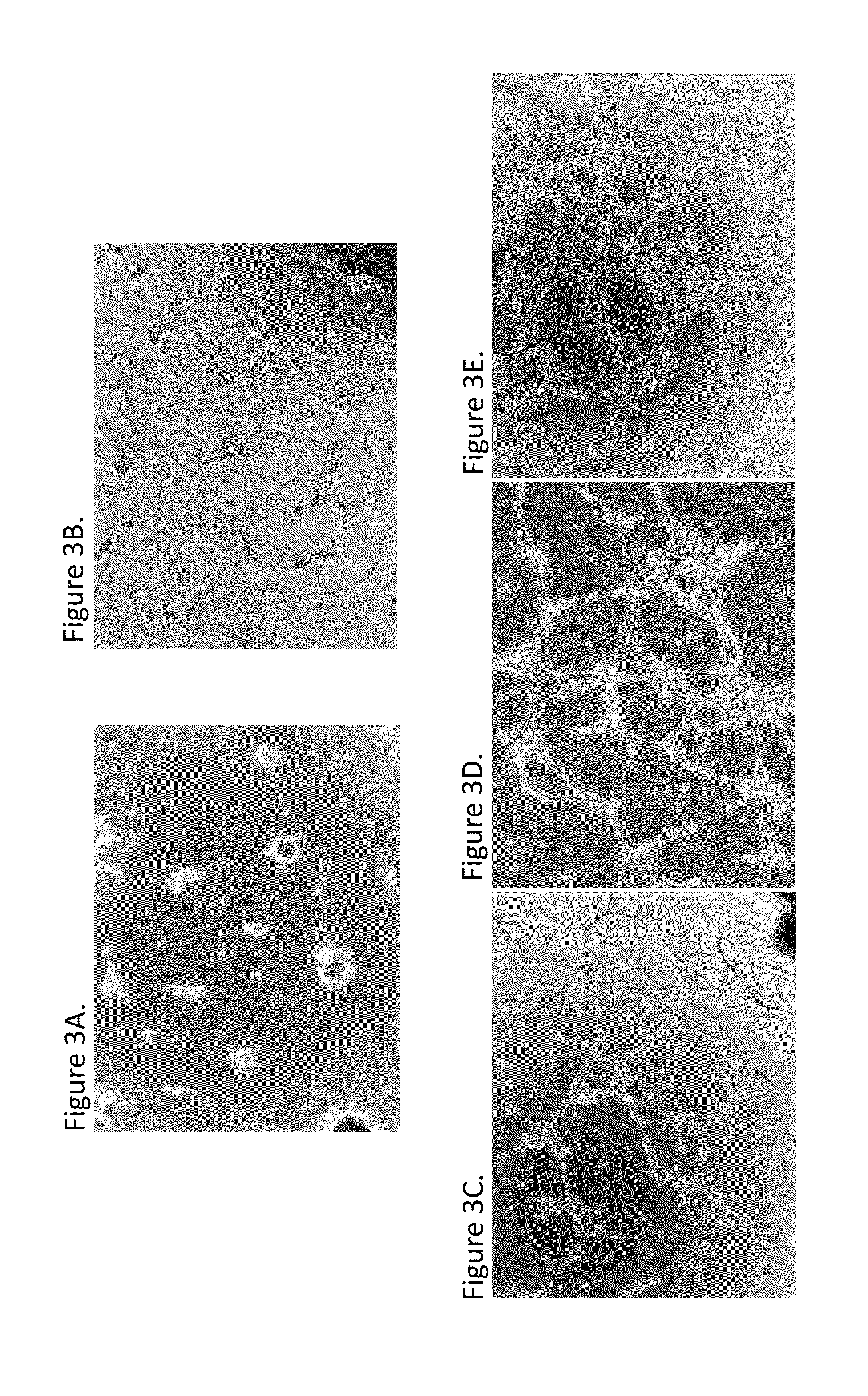Exosomes from clonal progenitor cells
- Summary
- Abstract
- Description
- Claims
- Application Information
AI Technical Summary
Benefits of technology
Problems solved by technology
Method used
Image
Examples
example 1
Preparation of Exosomes Derived from a Human Embryonic Progenitor Cell Line
[0223]Exosomes were prepared from a human embryonic progenitor cell line (PureStem® cell line, ESI Bio, Alameda, Calif.). PureStem® cell lines are scalable clonally pure embryonic progenitor cell lines derived from human embryonic stem (hES) cells (West et al. (2008) Regen Med. 3(3):287). The 30-MV2-6 PureStem® cell line is a CD31 positive, CD34 positive, endothelial progenitor line derived from the ESI-017 embryonic stem cell line. A gene expression profile of the 30-MV2-6 cells as analyzed by microarray is provided herein in Table 1, and includes genes yielding relative fluorescence units >1000 rfu.
TABLE 130-MV2-6 P6,Gene symbolMBA_3877EEF1A129470.94EEF1A128581.27EEF1A128032.06TMSB4X27627.77GNB2L127295.94TPT126985.77LOC10012975826697.4LAIR126461.51F2R26252LOC28517626055.83RPL4125872.51NAG1825689.47LOC64915025513.84FTL25344.95LOC9156125177.92LOC10013259325023.94RPLP224889.1LOC38847424755.51MGC1670324611.59UB...
example 2
Angiogenic Activity of Exosomes Prepared from a Human Embryonic Progenitor Cell Line
[0227]Angiogenic activity of exosomes was assayed using an in-vitro endothelial tube forming assay. The assay was performed in triplicate in a μ well slide (Ibidi, Verona, Wis.) or in single wells of a 96-well plate. The wells were coated with reduced growth factor Matrigel (BD, Franklin Lakes, N.J.). Human umbilical cord vascular endothelial cells (HUVEC) that were grown to 70-80% confluence were plated at 5000-7000 cells per well in a μ well slide in 50 ul of EGM-MV2 basal medium (Promocell, Heidelberg, Germany) (no supplements) containing up to 10 μl of exosomes in PBS or equivalent volume of PBS without exosomes as a negative control or in 50 μl of complete EGM-MV2 medium with growth factor supplements as a positive control. Alternatively, the assay was performed in a 96-well plate using 60,000 to 90,000 cells per well in 280 μl of medium and 20 μl of exosomes or PBS. The cells are incubated at 3...
example 3
Comparison of Angiogenic Activity of Exosomes Derived from a Human Embryonic Progenitor Cell Line and Exosomes Derived from Adult Bone Marrow-Derived Mesenchymal Stem Cells (BM-MSCs)
[0230]Exosomes were prepared from an embryonic stem cell derived PureStem® cell line, 30-MV2-6, and from adult bone marrow-derived mesenchymal stem cells (BM-MSCs) from two different commercial sources (Lonza and Promocell), according to methods described in Example 1. The angiogenic activity was assessed using the in vitro endothelial tube formation assay described in Example 2. Briefly, the exosomes (2×108 particles / 50 μl) were incubated with human umbilical cord vascular endothelial (HUVEC) cells for 12-16 hours on low growth factor Matrigel using a μ-well slide (Ibidi, Verona, Wis.). Tube length was assessed by image capture and analyzed using Angiogenesis Analyzer in ImageJ (http: / / rsb.info.nih gov / ij / ) image processing program. Total tube length formed per image / μ-well was calculated relative to to...
PUM
 Login to View More
Login to View More Abstract
Description
Claims
Application Information
 Login to View More
Login to View More - R&D
- Intellectual Property
- Life Sciences
- Materials
- Tech Scout
- Unparalleled Data Quality
- Higher Quality Content
- 60% Fewer Hallucinations
Browse by: Latest US Patents, China's latest patents, Technical Efficacy Thesaurus, Application Domain, Technology Topic, Popular Technical Reports.
© 2025 PatSnap. All rights reserved.Legal|Privacy policy|Modern Slavery Act Transparency Statement|Sitemap|About US| Contact US: help@patsnap.com



